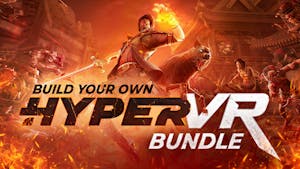The overall aesthetic of IsoMetro™ is a nod to city builder games from decades ago. Building on the base mechanics introduced by those original pioneers, IsoMetro™ leverages the vastly superior processing capabilities of today's "low end" hardware, to power a surprisingly nuanced and authentic economic simulation. Despite the nostalgic 90's visual aesthetic, it's not as simple as "big city, big buildings" -- economic effects are specific to every individual tile, encouraging you to think carefully about transit options and zoning policy if you want to see dense, vibrant city centers take shape.
Playing as the government, you can use your treasury funds to build public infrastructure such as utility facilities, transit networks, and civic service buildings. Meanwhile, buildings such as houses, shops, and factories will only be built in residential, commercial, and industrial zones respectively by the citizens themselves if you've met all their requirements. If your citizens can't get where they need to go, face utility shortages, are exposed to unacceptable levels of pollution, or are under-served in other ways, your infrastructure investments will go to waste. Meanwhile, a well-planned city will see healthy economic growth, and develop a positive cash flow from its tax base that can be used to invest in further expansion.
While building cities in IsoMetro™ is intended to be a comfortable, low-stress experience, the simulation also invites you to consider how the simplified concepts in the game world apply to the world we live in. Experiment with different transit options and zoning strategies to determine which approaches work better than others. Are roads and parking lots the way to go? Can you get away with not building even a single tile of road at all? Is a dense city core more profitable or is it better to have a metro area that sprawls far and wide?
IsoMetro™ brings you a balanced experience -- it can be thought-provoking if you choose to look closely at how your city works, but is also meant to be a satisfying and relaxing experience if you just want to watch your city evolve while you zone out to the varied music styles comprising the high-quality, 90-minute soundtrack.
More updates rolled out for IsoMetro, so heres another Metro Monday writeup. This weeks changes have been solely content expansion.
For starters, there are two new car models to improve the visual variety of traffic vehicles driving around town. These are a flashy yellow sports car, and a not-so-flashy tan minivan. Altogether, there are now 7 vehicle assets: four personal cars (the new sports car and the minivan, plus the existing sedan and pickup truck), the freight-hauling box truck, the public transit bus, and the subway traincars beneath the ground.
Next up, there are two new industrial buildings. First, if youve got enough demand in the Consumer Goods market and an adequate workforce, Petroligarch Corporation may choose to build a massive and intricate chemical processing facility that takes up a whopping 4x4 tiles. Moving on to the Advanced Products market, Mike Rowes Microchips an electronics manufacturer looking into candidate locations for its new CPU fabrication plant that is 3x3 tiles in size.
Finally, there is a new office highrise. Should you have 2x2 tiles of very well-connected commercial real estate available, Sharpe Systems will consider building a sleek, modern corporate office to serve clients using cutting-edge software at cutting-edge prices. We arent quite sure what they mean by that.
Minimum Setup
- OS: Ubuntu 18.04 LTS
- Processor: Intel i3 2100Memory: 2048 MB RAM
- Memory: 2048 MB RAM
- Graphics: Software Rendering
- Storage: 200 MB available spaceAdditional Notes: Disk space requirement will increase with new content.
Recommended Setup
- OS: Ubuntu 24.04 LTS
- Processor: AMD Ryzen 1200Memory: 8192 MB RAM
- Graphics: Integrated Graphics
- Storage: 1000 MB available space
[ 6432 ]
[ 7163 ]
[ 3708 ]
[ 5363 ]





































